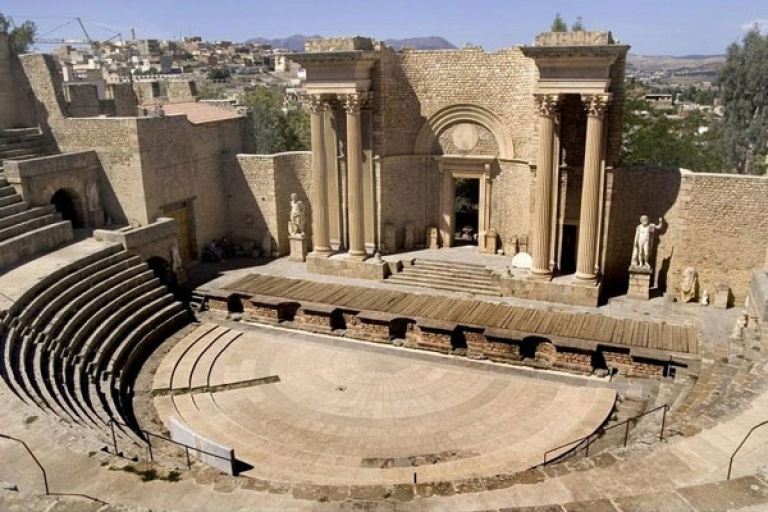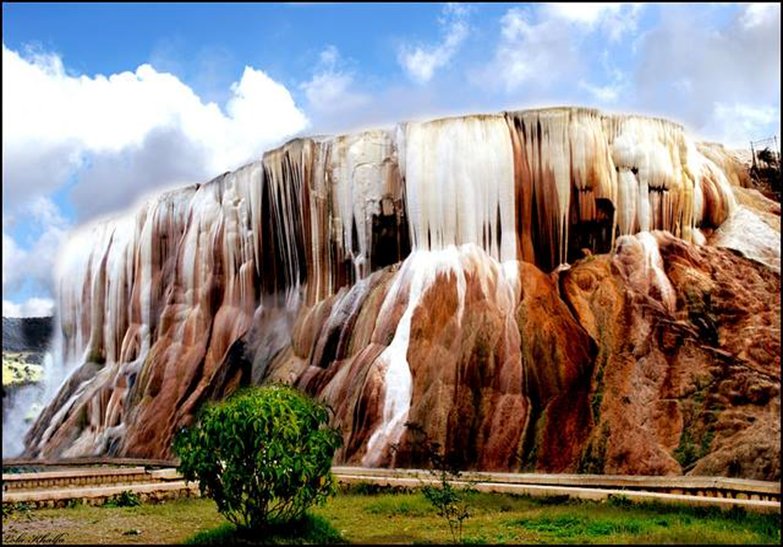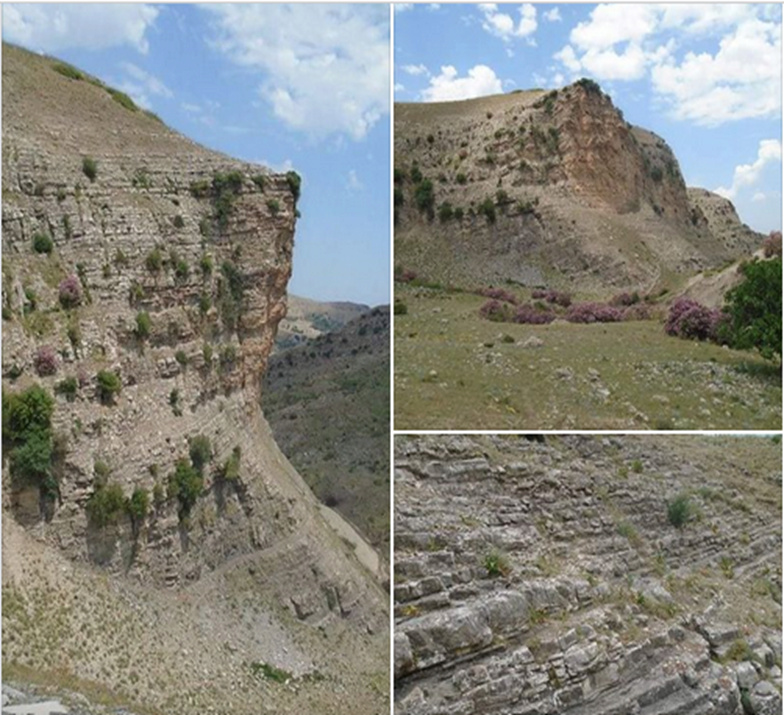The archaeological monuments of the state of Guelma are classified nationally

There are 15 archaeological landmarks in the state:
Roman Theater in Guelma:

However, Professor Mohamed Fawzi Muallem, Dean of the Faculty of Humanities and Social Sciences at the University of Guelma, is a specialist in the archeology of dialogue. During the field work, the studies conducted proved that most of the sites that were the subject of the study were Numidian, and the true identity of these monuments are local Numidian sites that were influenced by the Roman civilization, and they are not Roman, as was promoted. It has so far.
It was built at the end of the second and third centuries AD during the rule of Emperor Septimius Severus, who was of Libyan origin, and is considered a tourist attraction in the city of Guelma. It is among the antiquities classified and protected in Algeria according to Official Gazette No. 07 issued on January 23, 1968.
Megalithic cemetery in the municipality of Al-Ruknia.
The megalithic corner cemetery is located north of Hammam al-Dabagh. These cemeteries consist of more than 7,000 tombs dating back to the Stone Age.
Hammam Al-Shallala in the municipality of Hammam El-Dabagh.

Hammam Debbagh, also known as Hammam Debbagh, is a natural bath and hot spring located in the municipality of Hammam Debbagh in Guelma Province in Algeria. The history of the use of pigeons goes back to the Roman era in the first century AD due to its association with the Roman city of Thebilis (Tebilis). The site includes some facilities that date back to the Roman era and are still in use to this day.
Teacher's website
The ancient city of Tibilis in the municipality of Salawa Anouna.

Tibilis is an archaeological city located in the municipality of Salawa Anouna, northeastern Algeria
. Archaeological monuments are the memory of nations and what is in them, as they are monuments that have remained firmly established in the minds of many, and parts of them are still visible.
The Roman baths in the city of Guelma (they are actually local Numidian sites that were influenced by Roman civilization and are not Roman, but rather of a natural source)
They attribute it to the Romans. I do not know with what logic? If the Numidian soil is local, the source is natural, and the building is local, as you see it, it has no relation to Roman architecture.
Lake Bir Osman in the municipality of Hammam Debbagh
There is "Bin Ousmane Well" about two kilometers from the tourist gem Hammam el-Dabagh, and about 25 kilometers from the state of Guelma. It is an underground lake and a strange phenomenon that still keeps its secrets to this day. It was formed as a result of a geological movement in 1878 as a result of an earthquake. led to its emergence, There is a river inside the cave, its water is fresh and has a capacity of 100 meters in length, 40 meters in width and 15 meters in depth. The lake is also characterized by complete darkness and a bird can be heard in it, as in the spring season there is an influx of visitors to it. It is said that the inhabitants of the region in ancient times put a quantity of bran in it and followed the flow of the water. They found that the bran had reached the shores of Skikda.

The Rahmaniyya Zawiya “by Sheikhs Imara and Muhammad al-Hafnawi in Diyar” is located in the village of Nador in the municipality of Beni Mezlin, east of the city of Guelma, 22 km away, on the bank of Wadi Sibous. It was classified as a national heritage in 1999. Al-Zawiya was founded in 1869 AD by Sheikh Al-Allamah “Imara Bidyar.”
Ghar Al-Jamaa Cave in Jebel Taya, Bouhamdan Municipality.
This wondrous cave is located in the heart of Mount Taya in the municipality of Bouhamdan, at an altitude of 1,000 metres. It is a rare tourist masterpiece, thanks to the stunning views and strange secrets it contains. Discovered in 1867. It is a vast and wonderful cave of amazing stalagmites and stalagmites, with natural harmony and harmony in shapes and colours. Its dimensions are 1,200 m in length and 200 m in depth, and it consists of several corridors and corridors, containing more than 1,800 units of bones, antiquities and inscriptions. The cave was inhabited by prehistoric peoples, and in the Roman era it was a temple to the god Bakax, to which the residents of Tibilis used to make pilgrimages in the spring to worship, pray, and present gifts and offerings. During the glorious liberation revolution, the cave was a refuge and center for the Mujahideen.
Its charm and historical value make it a destination for visitors from various regions of the country, especially young people who are fond of adventure and exploration.
The Roman swimming pool in Barada Bath in the municipality of Heliopolis (actually a purely local Numidian site influenced by Roman civilization, not Roman).

It is located in the municipality of Heliopolis, along National Road No. 21, linking the states of Guelma and Annaba.
Historical overview: Barada Bath is a large, circular water basin with a diameter of 35 metres, built
With its large, regular stone Opus Quadratum, this landmark dates back to
Roman period. This swimming pool was used during the French colonial period in Algeria
This is what the pictures show,
Date of classification: Classified at the national level in 02/17/1954.
The old Byzantine barracks wall in the city of Guelma (a purely local Numidian site). The city of Guelma was completely destroyed by the Vandals, and I do not think that the Byzantines would build a wall for a destroyed city..

This place was founded in 1836 by the French army during the attack on the city of Constantine The stability of the French army in the region of Majaz Ammar and the establishment of the first military barracks in the Guelma region at the junction of Oued Bouhamdan with Wadi Al-Sharif to form the course of Wadi Sbous. This was led by General Clozal, after whom the municipality of Houari Boumediene is currently named and formerly Ain Ahsasayna. The Byzantine wall that was erected during the reign of Emperor Patrice Solomon and had 13 towers was rebuilt, and it contained a small city. There are also springs, reservoirs, and canals inside and outside it (what city are they talking about, and Kalama was completely destroyed), so what is the use of the towers and the wall? France itself rebuilt it again with the intention of settling the colonizers.
The French established the first military barracks in Guelma, along with a military hospital. Its construction was completed in 1844, and the construction of the city of Guelma for residents of the city began, with four doors and a wall. . This French military place played a major role in imprisoning and torturing Algerians, especially on May 8, 1945, during the revolution, and after independence on July 5. The picture represents the Takna gate in front of it, military teams from the Sabahiye, which was formed by French colonialism after the occupation.
The ancient castle of Bouatefan in the town of Ain el-Arabi.

The site contains archaeological remains of columns and polished stones scattered everywhere on the ground over an area of approximately 40 hectares. It witnessed the succession of several historical eras: Libyan, Phoenician, Roman, and then Byzantine (residential bodies with other facilities and a cemetery).
Café Pozion in the municipality of Bouhachana.

The site of Kaf Bouzione (Old Zattara) in the municipality of Bouhachana, located west of Oued Bumia, where the waters of the source of the sulfurous bath of Roumia flow. It is a fortified city, currently known as Hensher Kaf Pozion. Inscriptions were found at the site dating between the years 121 AD and 340 AD. There are also traces of a wall believed to be Byzantine made of huge polished stones.
Chinior terraces in the municipality of Ain El-Arabi.

They are drawings and wall inscriptions representing people and animals of various types dating back to the prehistoric category. This large rock, 32 meters long and 12 meters high, which bears these inscriptions, is located at the entrance to Wadi Boufarais and a left tributary of Wadi Sharef, approximately at the halfway point between the municipalities of Salawa Announa and Ain Makhlouf. .
Ain El Nashma ruins in the municipality of Ben dJarrah.

It is located on the banks of Wadi Sukhoun, at an altitude of 510 m, about 5 km southwest of Guelma, on state road No. 16 leading to Ben dJarrah and the Mauna forest.
The archaeological site of Ain Nashma is classified. It extends over an area of 15 hectares and is an ancient city called Thabarbusis.
On the page, we talked about the Roman theatre, the Shalala Bath, the archaeological city of Tibilis, the Numidoroman baths, the Numidoroman swimming pool, the barracks wall, and the ruins of Ain El Nashma.
Source: websites

